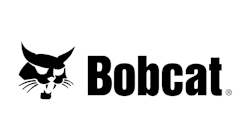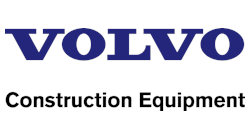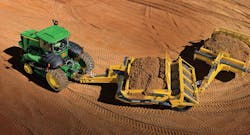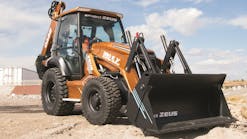New doesn’t last forever. When the newness wears off of heavy equipment—or when a diesel engine reaches 6,000–10,000 hours—it’s time to make a decision: purchase another new machine or repair, recondition, rebuild, or remanufacture the now not-so-new one. In order to make the best choice, several factors must be considered.
First, it’s important to understand the customer’s business, advises Jim Cole, vice president of vocational sales and product integration at Omnitek Engineering Corp. His questions for fleet managers to help them decide if reman is right for them include finding out the duty cycle and time cycle and determining the number of miles driven per year. “You need to know the drivability parameters,” he says, adding, “If you keep it less than five years, don’t reman.”
Reman “always makes sense for smaller components” including the alternator, starter, hydraulic fuel pump, and injectors, claims Kurt Coffey, director of sales and marketing for CNH Reman. Even on larger capital items such as engines and transmissions, he believes it makes sense most of the time.
However, when choosing between repair and reman, he advises evaluating on a case-by-case basis. “If you have a nuisance problem or a catastrophic problem or failure with a high-dollar engine on a machine you use all the time, reman makes sense,” observes Coffey, “because it saves thousands.”
The process of elimination in diagnosing the problem can become cost-prohibitive, so it can save money to go directly to a reman option. “Spending a lot of time on diagnostics is expensive,” states Coffey. “If you can fix the problem at less than 75% of the cost of reman, just fix it, but if it’s a catastrophic problem, you’ll need a full reman.”
Opting for a reman in response to a catastrophic failure, particularly midway through construction season, can improve customer satisfaction. “People like the extra warranty and less cost,” says Coffey. “If you have to rebuild a new vehicle, the customer is unhappy. It’s better to replace income-producing newer machines with new or reman.”
Conversely, he says if it’s a backup machine or an older machine, just fix it. “Don’t throw tons of money at older machines,” advises Coffey, although he admits that some of the top-selling parts go on machines from the 1970s.
Distinguishing the Differences
For years, reman carried the stigma of used parts. It’s an arduous task to overcome that reputation, but Coffey says the industry is carefully choosing descriptive language to make distinctions. “It’s not rebuild, reuse, or refurbish; those words carry a stigma. It’s reborn.”
Remanufacturing takes a worn or non-functional component and returns it to a “like-new” or “better-than-new” condition, and is covered by a warranty to ensure like-new levels of performance and quality, explains Mark Wagner, reman product marketing manager with John Deere Construction & Forestry. He defines three repair solutions in order to point out divergences.
The cleaning stage of a John Deere reman
Remanufacturing:
- Complete disassembly of the component
- Replacement of all wear components (like bearings and seals)
- Replacement of all failed components
- Testing to new performance specifications
- Warranty covering defects in materials and workmanship
Reconditioning:
- Limited disassembly
- Replacement of some wear components
- Replacement of failed components
- Limited performance testing
- May or may not carry a warranty
Repair:
- Disassembly to the point of failure
- Only failed component is replaced with new or used parts
- May or may not carry a warranty
All John Deere reman components are remanufactured, not reconditioned or repaired, elaborates Wagner, in order to meet or exceed new performance specifications. “As a result, customers can expect the same level of performance and durability in a remanufactured part as they can from a new component.”
A reman technician at work
John Deere Reman also incorporates the latest design updates and enhancements into the product to ensure the customer benefits from the design changes.
Reman is not a band-aid, continues Coffey. It is a premium solution. “The final product is as good as new due to tight quality testing on every part.
He explains the process: the engine is disassembled to the bare core and cleaned. All mandatory replacement wear parts are replaced and tested before the engine is reassembled to OEM spec.
Coffey contends that reman employs more rigorous testing than new in some cases. For example, in addition to running an engine on the dyno, he says testing includes using air to check for leakage because air is more viscous. “Parts go down to the bare core and are reassembled back to spec on an assembly line. It’s almost like new.”
While a reman produces a like-new product, a rebuild or refurbish only replaces the problem components. “They repair to the point of failure,” explains Coffey.
Guaranteed Benefits
Although reman provides a like-new machine, it typically costs 20–40% less than new with comparable parts. “John Deere Reman components can be up to 40% below the price of new, so the customer gets the same level of performance and durability as new at a significantly reduced cost,” expounds Wagner.
Another example of the decreased cost of ownership provided by reman comes in the form up uptime versus other repair options. A typical reman on a skid-steer loader is a 10- to 14-hour job, as opposed to 40–60 hours for an overhaul, estimates Coffey. “Opportunity cost is more than price.”
Another key advantage of reman is a warranty that’s often better than new. Wagner says that John Deere Reman components come standard with a premium one-year unlimited hour warranty (parts and labor, when dealer-installed).
Coffey says that an engine warranty from CNH is equal to new (two-year warranty on parts and labor) and for other parts, is better than new: 12 months (versus six months for new). In contrast, an overhaul done by a dealer doesn’t usually come with a warranty as comprehensive. “They buy a kit, send the head out, and reassemble the parts from a kit,” he says. “The dealer can’t warrant the work of others, so you may not be covered for issues. When one overhaul goes wrong, the dealer realizes how valuable reman is; it’s betterthan an overhaul.”
He says reman warranties are better in order to take objections off the table. “It’s like when Kia and Honda offered 10-year warranties. They believed in the quality and wanted to remove objections to encourage people to take a chance.”
Further objections were removed due to extensive testing and tooling, notes Coffey. “We test every part to measure quality and ensure it’s equal to or better than new.” CNH’s benchmark is a comparison with new parts.
Another important benefit is reduction of downtime, a contractor’s nightmare. Coffey points out that dealers and contractors both profit from reman because a dealer can remanufacture three engines in the time it takes to overhaul one.
In addition, remanufactured components provide …














